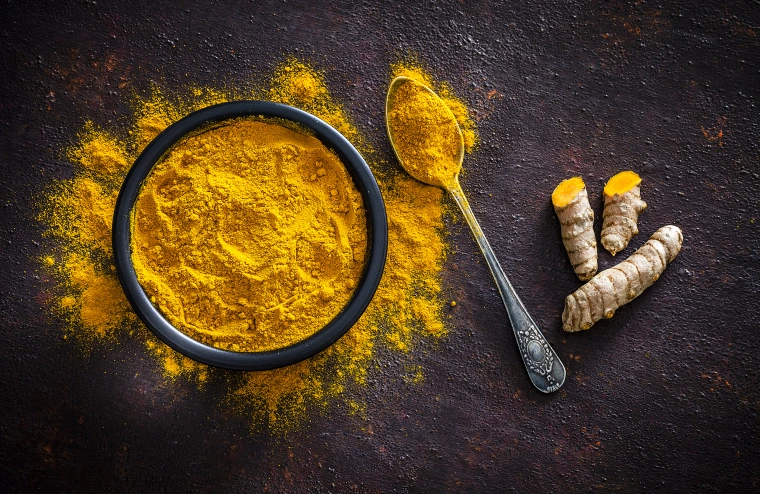I’ve had my fair share of struggles with chronic pain. I once injured my knee in a hiking accident and the inflammation would flare up anytime I pushed myself too hard. After trying the usual painkillers, I turned to something my grandmother had sworn by for decades: turmeric. I have to say, I wasn’t initially convinced a spice could make that much difference. But after some research—and a lot of turmeric tea—I became a believer.

Turmeric, particularly its star compound, curcumin, has been used for centuries in traditional medicine to treat everything from joint pain to digestive issues. What fascinates me the most about curcumin is its potential as an anti-inflammatory powerhouse. I wasn’t alone in discovering its benefits either. Many people have shared how it changed their lives, especially those battling long-term inflammatory conditions like arthritis.
Read Also:
- Turmeric: The Golden Spice for Inflammation and Joint Health
- Nature’s Apothecary: 7 Timeless Herbal Healing Solutions for Your Health
- Nourish & Thrive: The Ultimate Guide to Holistic Nutrition
In this deep dive, I’ll take you through how curcumin works, the scientific backing behind its anti-inflammatory properties, how to incorporate it into your daily life, and some personal tips I’ve picked up along the way.
How Does Curcumin Reduce Inflammation?
Curcumin’s Biological Mechanism
Curcumin is like the superhero of turmeric. It’s what gives the spice its vibrant yellow-orange color and, more importantly, its potent health benefits. The key to curcumin’s anti-inflammatory effects is its ability to inhibit molecules in the body that trigger inflammation. One of the main players it blocks is NF-kB, a protein complex linked to inflammatory responses in the body.
Chronic inflammation is a sneaky culprit behind many conditions like rheumatoid arthritis, heart disease, and even some cancers. Unlike acute inflammation, which helps the body heal, chronic inflammation is persistent and harmful over time. That’s where curcumin steps in, acting almost like a fire extinguisher for inflammation.
Real-Life Stories: Curcumin’s Effect on Chronic Pain
I’ve met a few people over the years who swear by curcumin. One friend, James, struggled with arthritis in his hands, making it difficult to play guitar. After including a daily dose of curcumin (with a bit of black pepper to help absorption), he noticed a reduction in the stiffness and pain in just a few weeks. Sure, it wasn’t a magic fix, but combined with a balanced diet, it helped him avoid some of the more intense pharmaceuticals he wanted to steer clear from.
What Science Says: The Research on Curcumin
Studies Supporting Curcumin’s Anti-Inflammatory Power
A growing body of scientific studies has looked into curcumin’s anti-inflammatory potential. For instance, a study published in the Journal of Medicinal Food found that curcumin significantly reduced inflammation in patients with osteoarthritis. Another study in BioFactors revealed that curcumin could reduce inflammatory markers in people suffering from metabolic syndrome, a condition often accompanied by chronic inflammation.
Interestingly, curcumin has been shown to work as well as, if not better than, some anti-inflammatory drugs—without the same risks of side effects. Researchers have even looked into curcumin’s ability to tackle conditions like inflammatory bowel disease (IBD), with some promising results, though more large-scale studies are needed.
Effective Dosages: How Much Curcumin is Enough?

Now, this is where things get tricky. Curcumin, when consumed in its natural form (like in turmeric powder), isn’t absorbed well by the body. That’s why you’ll often see curcumin supplements paired with piperine (a compound found in black pepper) to increase absorption by up to 2000%. Based on most studies, dosages between 500 to 2000 mg of curcumin per day are effective for reducing inflammation. If you’re new to it, I’d recommend starting with around 500 mg daily, then adjusting based on how your body reacts.
For me personally, I prefer taking curcumin in supplement form, but I also like incorporating turmeric into my meals for its subtle, earthy flavor. And if you’re worried about consuming too much, studies show that curcumin is safe in dosages up to 12 grams per day, although that’s not really necessary for most people.
Easy Ways to Add Turmeric to Your Diet
Turmeric in the Kitchen: My Favorite Recipes
I’ll admit, turmeric can be a bit of an acquired taste. But once you get the hang of it, it can become a delicious part of your daily diet. One of the simplest ways to add it to your meals is by making golden milk. This warm, spiced drink combines turmeric with milk (or plant-based milk), black pepper, and a bit of honey or maple syrup. I find it soothing, especially in the evening when I want to relax.
Another easy option is sprinkling turmeric into your scrambled eggs, soups, or even smoothies. It blends surprisingly well with coconut milk-based curries, and I love how it enhances the flavor of roasted vegetables. Don’t forget to add a pinch of black pepper to increase the bioavailability of curcumin!
Supplements: The Best Way to Ensure Consistent Dosages
If you’re not a fan of the taste, or you’re looking for more potent anti-inflammatory effects, curcumin supplements are a great option. Look for a supplement that includes piperine (black pepper extract) or liposomal curcumin for better absorption. I personally like to take a supplement alongside a meal with healthy fats (since curcumin is fat-soluble), which helps my body absorb it more effectively.
Curcumin and Chronic Conditions: A Natural Solution?
Arthritis, IBS, and Beyond: Who Benefits the Most
I’ve seen some amazing results with people who suffer from arthritis or inflammatory joint pain, like my friend James. But curcumin’s benefits don’t stop there. People dealing with inflammatory bowel disease, asthma, and even cardiovascular inflammation have reported improvements after regularly taking curcumin. It’s also been studied for its potential to slow neurodegenerative diseases like Alzheimer’s, though more research is needed in this area.
How Long Until You See Results?
This is a question I get a lot, and the truth is that curcumin isn’t an overnight fix. Most people start noticing changes in pain levels or inflammation after 4 to 6 weeks of consistent use. Patience is key, and it works best when paired with an overall anti-inflammatory lifestyle—think a diet rich in fruits, vegetables, and omega-3s, with regular exercise.
Curcumin vs. Traditional Medication: What You Should Know

Natural vs. Pharmaceutical: Pros and Cons
One reason I love curcumin is that it offers a natural alternative to non-steroidal anti-inflammatory drugs (NSAIDs). While NSAIDs are effective, long-term use can lead to side effects like stomach ulcers, kidney damage, and heart problems. Curcumin, on the other hand, has a much safer profile for most people, although it can interact with blood thinners and should be used cautiously if you have certain medical conditions.
But remember, curcumin isn’t a replacement for medical advice. If you’re suffering from severe inflammation or chronic pain, always talk to a healthcare provider before switching from traditional medications to natural alternatives.
Conclusion: The Long-Term Benefits of Curcumin
When it comes to chronic pain and inflammation, curcumin can be a game-changer. I’ve experienced its benefits firsthand and have seen its impact on others too. Whether you choose to add it to your diet or take it in supplement form, consistency is key. And always listen to your body—sometimes it takes a little time to notice the effects, but they’re well worth the wait.
If you’re tired of relying solely on medications and are looking for a natural way to manage inflammation, curcumin is worth a try. Just remember, like with any remedy, it works best when combined with a healthy lifestyle.

















